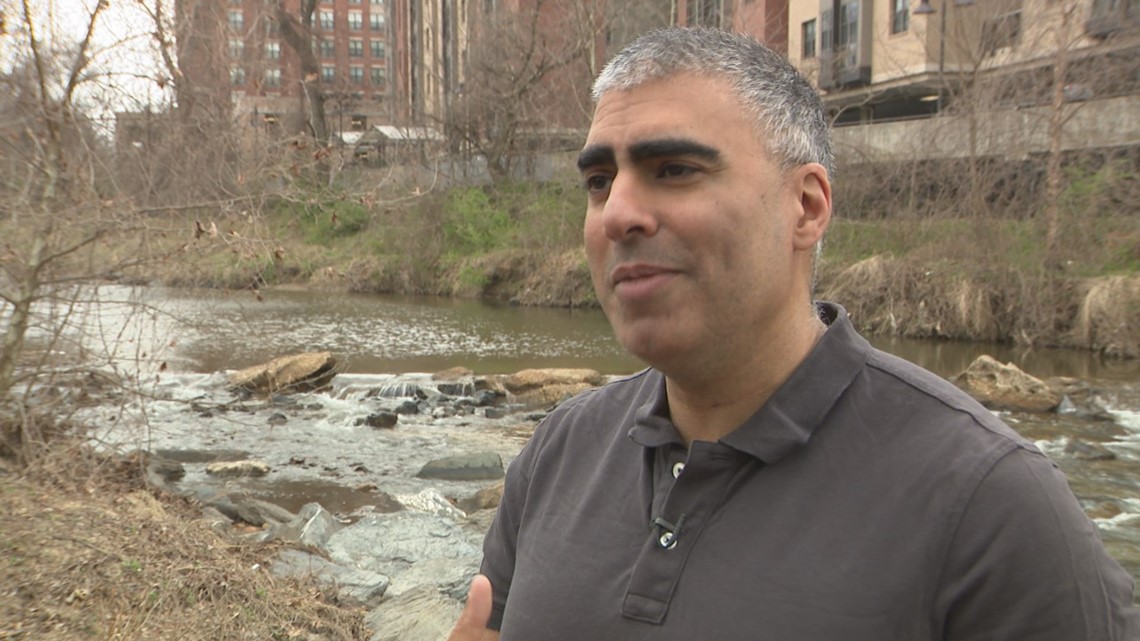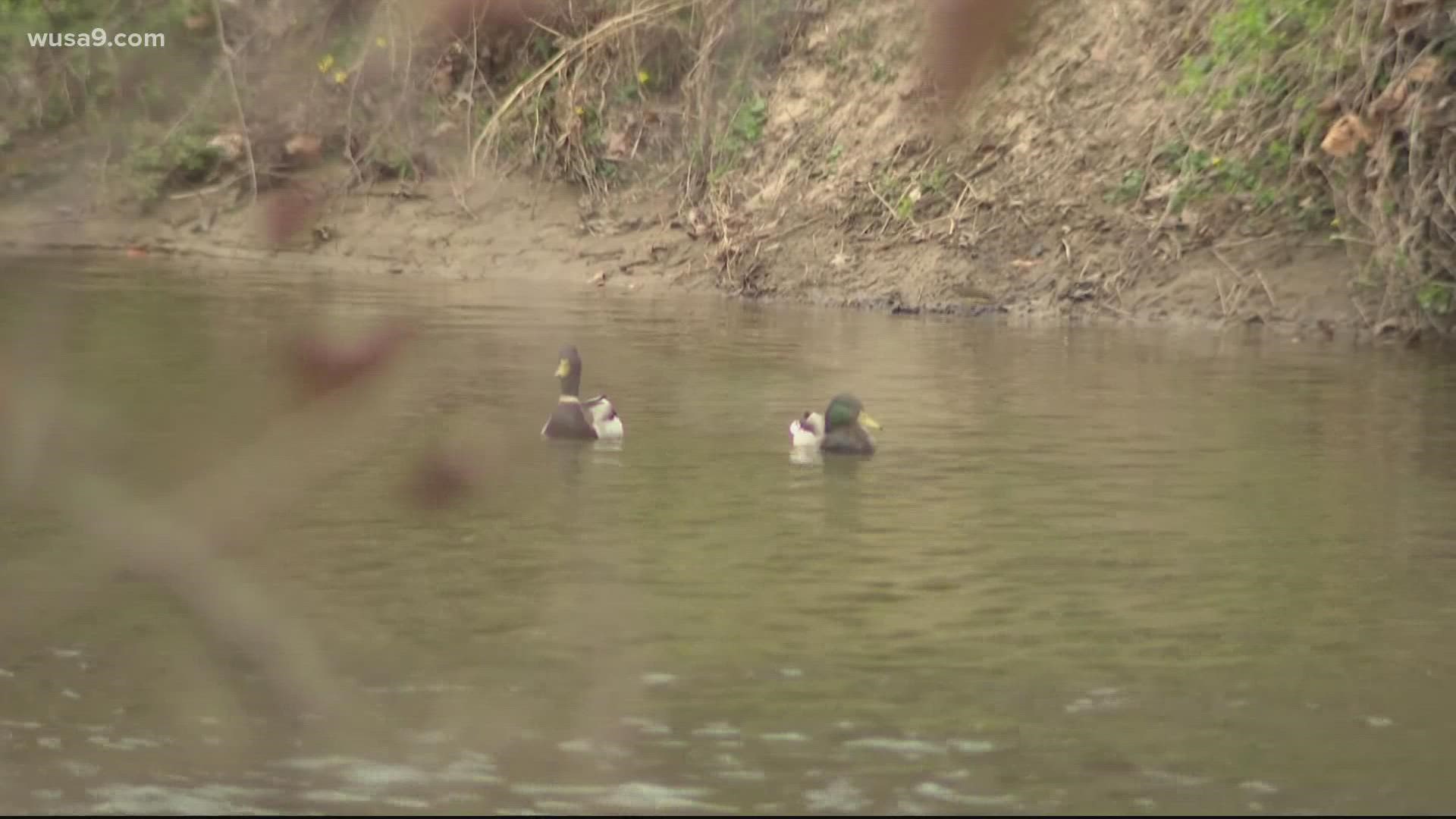WASHINGTON — After a winter storm, do you ever wonder where all that salt on the roads goes?
University of Maryland professor Sujay Kaushal did.
On a March morning, he walked along the creek that runs behind several of the engineering buildings on campus. He is quick to point out what he found.
“When the snow melts, it funnels all that into the storm drain, and then you get this water, that is salty going out into the stream,” he explained.
He began studying salt's effect on water quality 20 years ago and has since focused that study on the D.C. metro area's waterways.
He explained you start to see the salt levels rising almost immediately during a winter storm.


“You see a huge pulse in the salt when they apply it to the roads,” Sujay said. “It can last for months.
Sujay’s research shows that salt in D.C. area waterways has risen by 40%. In those 20 years since he started studying it. But, what is really troubling is the effect it has on nearby waterways and their ecosystems.
“Organisms have a limited capacity to regulate their cells with all these salts in the environment,” Sujay explained. “So they dry up and shrivel up, basically. It can affect aquatic life.”
“It causes salt stress to plants, where it dries out the roots, and it prevents the plant from getting water. So it can lead to crop failure.”
But how do you measure how salt has affected waterways? Sujay’s latest study decided to look at that in stages. It defined them in four categories:
“First stage, you get started to get peaks during winter in the salts,” he said.
But it escalates from there. Stage two: salts build in the environment. Stage three: the salt begins to affect the environment. Stage four: ecosystem collapse.


So, where are our rivers and streams in the DMV?
“We're in stage three, which is where we start mobilizing harmful cocktails,” he explained.
“And if you have excess salt that goes into drinking water systems, it can strip off copper and metals from pipes, contaminating home drinking water supplies.”
What are our leaders doing to curb road salt use?
We contacted the D.C., Maryland, and Virginia departments responsible for laying out road salt during the winter. D.C. and Virginia didn’t offer a response.
Maryland’s State Highway Administration responded that they have actively sought out ways to reduce the amount of salt used.
According to a spokesperson they reduced salt usage significantly in the last five years. As an example, from using 800 pounds per lane mile to as low as 300 pounds of salt and averaging about 500.
Sujay said it’s promising that Maryland has moved to reduce salt levels. But he feels something needs to be done across the country before the road salt used to curb winter hazards becomes a water hazard.

